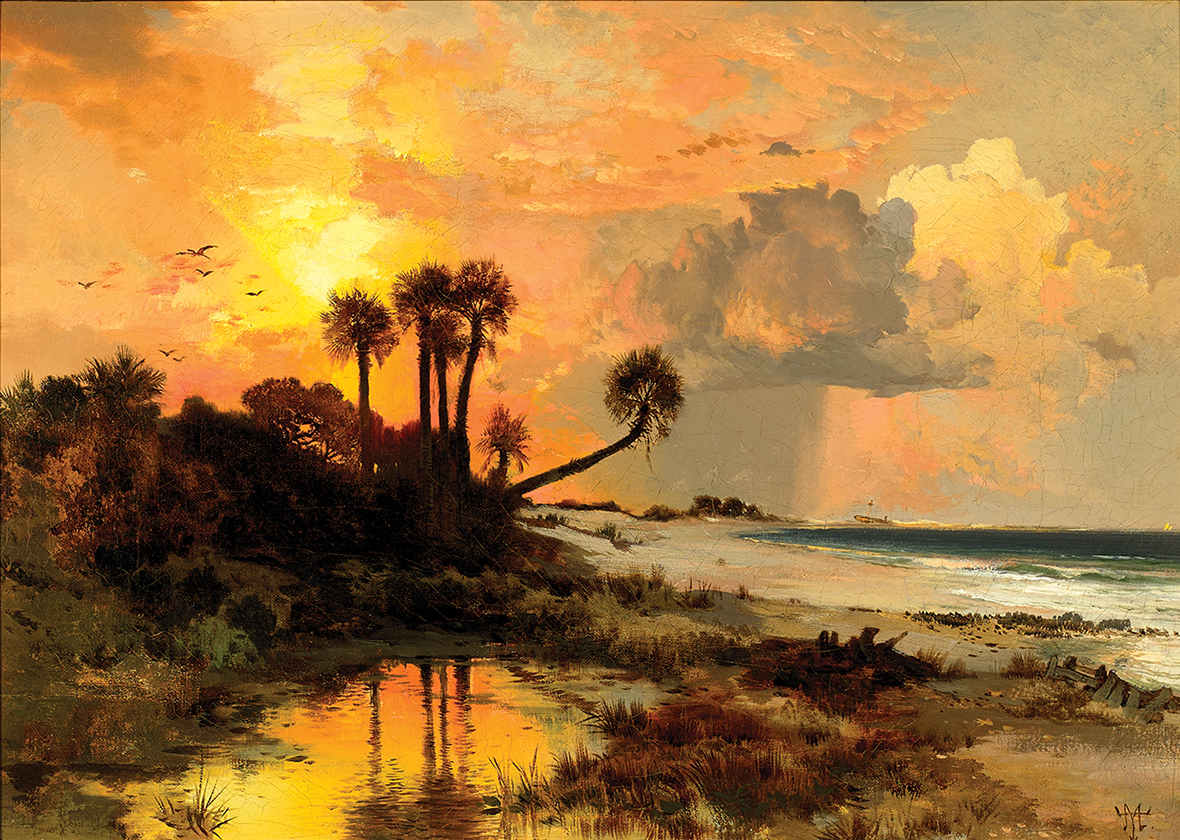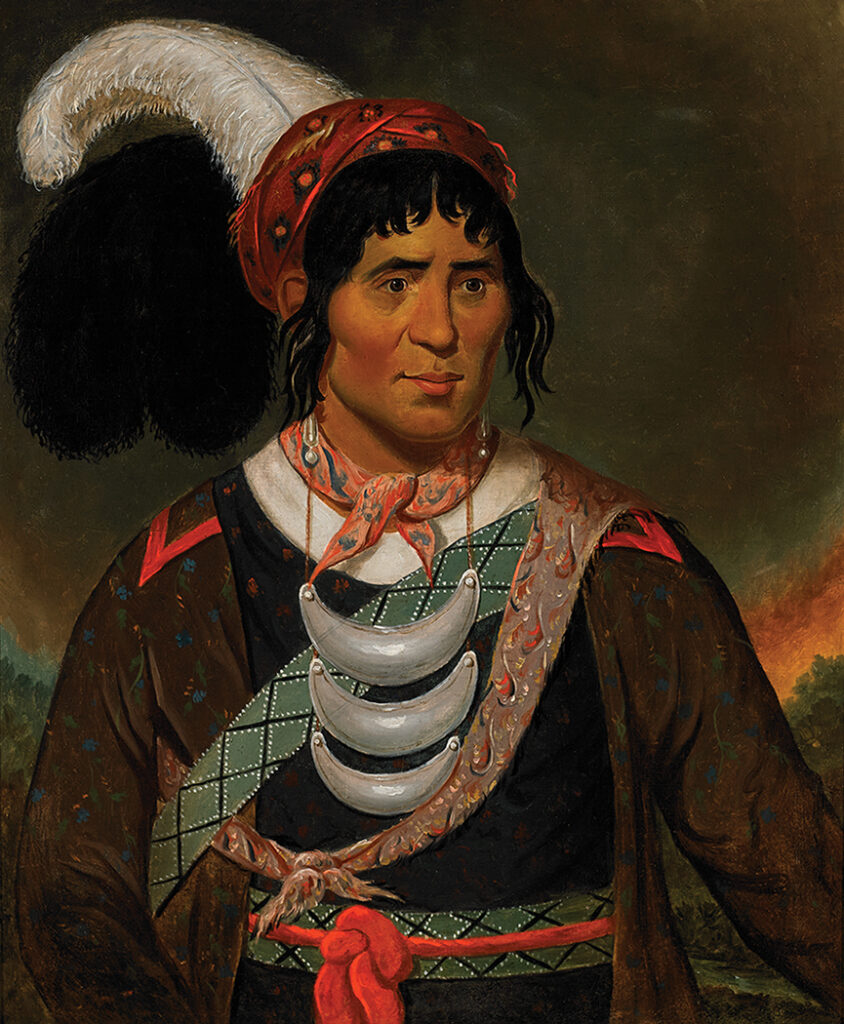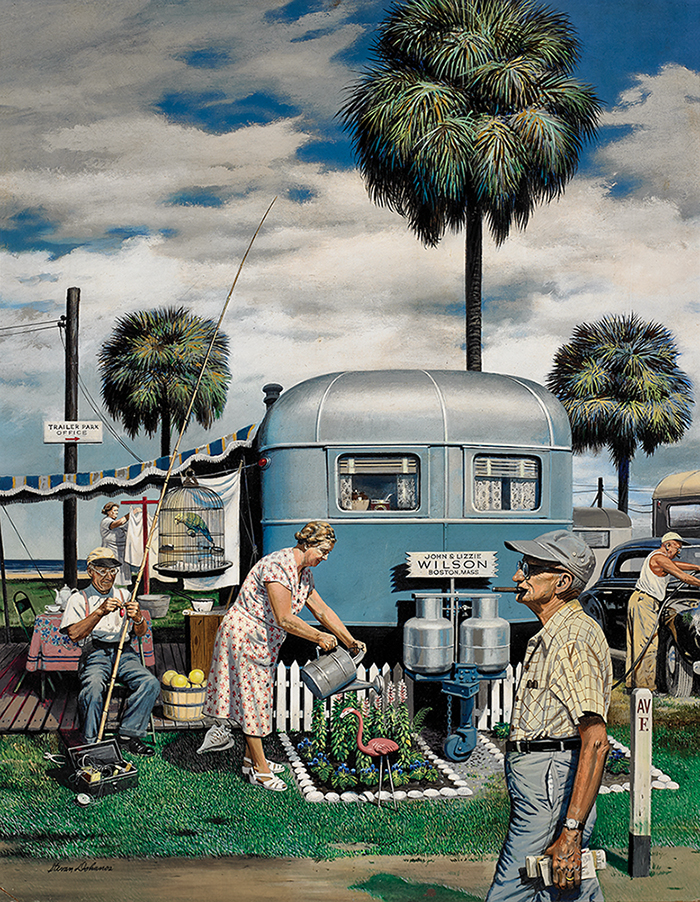The “transformative” gift from Samuel and Roberta Vickers may be seen at the Harn Museum of Art in Gainesville.

Many years ago, I bought a book titled Celebrating Florida: Works of Art from the Vickers Collection, edited by Gary R. Libby and published by the University Press of Florida in 1995. The book highlights a selection of paintings from the collection of Samuel and Roberta Vickers and includes essays about each painting and artist. It is the sort of book that makes one proud to be a Floridian as the works are both eclectic and beautiful. It is a stunning representation of our beloved state, with rich imagery and history. I had no idea how important the Vickers collection would become.
The Vickers, known widely as Sam and Robbie, are Florida natives with a passion for the fascinating history and natural beauty of the Sunshine State. They married about 65 years ago, raised a family and built several successful businesses in Jacksonville.

In the early 1980s, they began seeking out and collecting art that related to Florida. Sam also used business travel as an opportunity to visit galleries and antique shops to expand the collection. As it turned out, they both had a keen eye for art and the means to collect it.
Over a 40-year period, the couple amassed a significant collection of paintings, drawings and prints from the early 1800s to about the 1960s. The collection includes more than 1,200 pieces of art by more than 700 artists. It is the largest art collection featuring Florida and includes many of the greatest names in American art.
As it turns out, my beloved book, which features 66 works, was just the tip of the iceberg. Fast forward to 2021, when I received a call from old friends at the Florida Museum of Natural History at the University of Florida (UF) in Gainesville who were looking for a space to exhibit a 20-foot-long historic Seminole dugout canoe made by the legendary carver Cory Osceola. I was told the boat was part of a larger art collection that had been donated to the Harn Museum of Art, also at UF, and, while they wished to retain ownership, the curators hoped to put the boat on long-term loan at the Silver River Museum.
This was when I learned that the Vickers had just donated their entire collection to the Harn, and I was floored with the scope of the gift. The grouping includes paintings by artists such as Winslow Homer, Thomas Moran and N.C. Wyeth. The paintings represent a variety of styles and themes, from glowing impressionistic sunsets on a Gulf Coast beach to a photograph-like rendition of a 1951 Florida trailer park. A complete research library accompanied the artwork.

To truly appreciate this collection, one must consider it all together and within the context of Florida today. The paintings as a group capture the diverse natural beauty of our state. In many cases, they are snapshots in time of places that no longer look as they did when the artist put paint to canvas. The works capture decades of change and bring to life an incredible range of people and lifestyles over the years. It is a colorful study of the Sunshine State through the eyes of hundreds of artists.
The Florida Art Collection, as it is now known, has been described as “transformative” for the Harn. With the donation, the Vickers made an already wonderful museum truly exceptional. In interviews, the couple noted that they chose UF because they value education and feel the collection would be safely kept in perpetuity at such an institution.
The Harn opened in 1990 and has twice been expanded. A third major expansion is in the planning stage. The 20,000-square-foot addition will include dedicated exhibit space for the Florida Art Collection as well as a print study room providing students and scholars a place to closely analyze selected works of art. Best of all for Marion County is that this wonderful resource is so close and accessible. The museum is open Tuesday through Sunday, with variable hours. Admission is free. To learn more, go to harn.ufl.edu OS
Scott Mitchell is a field archaeologist, scientific illustrator and director of the Silver River Museum & Environmental Education Center, located at 1445 NE 58th Ave., Ocala, inside the Silver River State Park. Museum hours are 10am to 4pm Saturday and Sunday. Admission to the park is $2 per person; free ages 6 and younger. To learn more, go to silverrivermuseum.com.






